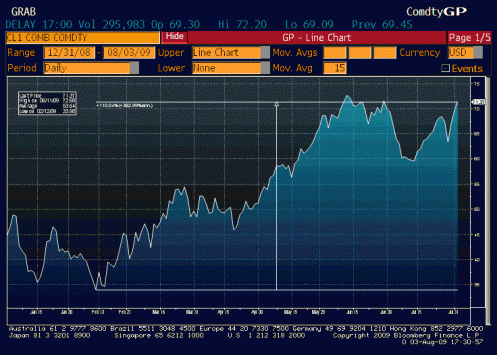
In an industry where anything could happen, surprises—often unwelcomed—are hard to come by. Oil is exactly such an industry at the moment. No one is sure where oil is heading, near-tem forecasts range from $20 to $80 per barrel by the end of the year, and there are just too many wild cards on the scene.
So, in a sense, the news that shale producers are launching more drilling rigs is not really news at all. It was expected, the companies themselves said they are ready to start ramping-up production as soon as prices reach some more reasonable level. What’s new, perhaps, is Morgan Stanley’s warning that production from the new wells being drilled could prompt a reversal of forecasts that U.S. crude production is falling and will continue to fall.
Morgan Stanley commodity strategist Adam Longson, who led the team that researched the situation, said that this reversal carries a downside risk for oil prices. According to Longson’s team, “The rig count in the highest initial production counties of the Permian Midland continues to march higher and is not far from its 2015 peak.” That’s impressive on its own, but the other thing that’s new is where all these new rigs are concentrated: in high-yield fields. This means that the ramp-up could be pretty significant.
As Forbes author Art Berman wittily notes, rigs don’t produce oil, wells produce oil. What’s more, even a decline in the rig count does not necessarily signal a respective decline in output. On the contrary, as a Baker Hughes figure shows, while rigs have been in steady and sharp decline since 2014, the number of wells continued to climb throughout the period to February 2016.
Things may have stalled for a bit after prices tanked below $30, but now that they have recovered, shale boomers are eager to start pumping more. And prices, of course, reacted to drop well below that dream price level of $50. It wasn’t just the rig count that drove them down; to be fair, Brexit had a central role, but that doesn’t negate the effect of the higher rig count.
Oil producers in the shale patch are aware that they are walking a very fine line. Yet, they don’t really have a lot of options. Talk about rising drilling efficiency and official data that supports it doesn’t pay down debt, and this is what shale boomers have in abundance.
What they don’t have is space for maneuvering as lenders tighten credit. Basically, they can’t continue to curb production, but they must be very careful by how much they increase it. It’s a precarious situation. All that shale boomers can do is continue to work on efficiency and hope that the Brexit fallout subsides quickly.




































This article is crap. Analysts, experts and sh!tty journalists should all be out of a job for reporting and stating such garbage. Articles that say rig counts rose 5 out of the 6 weeks are all for impact. Rig rate had risen for 3 weeks by 21 rigs, then on 4th week it dropped by 7 and then 5th and 6th week gained a combined 19 rigs( oil not gas). For added rigs to impact this rapidly declining production, there will have to be a substantial increase of several hundred rigs and for this to happen there has to be a significant rise in the price of oil. These morons are reacting about an increase of 30+ rigs over the course of 6 weeks. The way these experts and analysts talk about improved efficiency is laughable. They do not know anything about drilling an oil well or completing and producing from it. Everyone says the exact same thing regurgitating something they heard once and it has snowballed. ” With increased technology and efficiency ” lol. What has increased in the past 2 years in this respect? Nothing, except for terrible pumping practices. Wells drilled in the past 15 months are able to produce 2x more oil then wells drilled 2 years ago, why do you think this is. If you think it is increased tech your crazy.